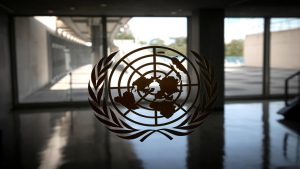Negotiators at a United Nations (UN) summit to protect nature appeared closer to reaching a new global deal on Sunday (18 December 2022) that could see 30% of land and sea protected by 2030, with hundreds of billions of dollars directed toward conserving the world’s wild places and species.
China, the president of the COP15 conference in Montreal, released a proposed text that environmental campaigners praised for setting aspirational goals.
The text “accurately reflects an ambitious approach and a compromise position that has a chance of getting through the negotiations.” says Brian O’Donnell, Director of the non-profit Campaign for Nature.
“I give them credit for navigating a really difficult challenge.” he adds.
The draft based on the last two weeks of talks, sets a crucial financial target of $200 billion per year for conservation initiatives, though demands less from wealthy countries than some developing states had wanted.
It lays out support for protecting 30% of land and waters by 2030, a landmark goal informally known as 30-by-30. Businesses will also be asked to assess and disclose how they affect and are affected by biodiversity considerations, but reporting will not be mandatory.
Ministers from nearly 200 governments now need to hammer out the details of the 23 proposed targets through Monday.
Policymakers hope a deal can spur nature conservation the same way that an international pact in Paris in 2015 helped mobilize efforts to limit planet-warming carbon emissions.
The negotiations at the @UNBiodiversity #COP15 on the topic of #DSI still continue.@kentnnadozie highlights that the negotiations could benefit from the experience and activities under the @planttreaty
Learn more 👉 https://t.co/JotzUWhQJb#post2020 #ForNature pic.twitter.com/YWYT3AH7Wp
— FAO Climate Change & Biodiversity (@FAOclimate) December 17, 2022
“This provides a floor to land a deal on.” says Li Shuo, global policy adviser at Greenpeace East Asia.
“The final days of COP15 need to build from here.” Shuo adds.
Devil in the details
While optimistic, campaigners worry the technical wording of the 30-by-30 target might not adequately address ocean conservation. The target mentions protecting at least 30% of terrestrial, inland water, and coastal and marine areas.
Humanity will pay the ultimate price for the destruction of our environment.
It’s time to put money to work for and not against nature.
Our Nature Pledge 🌱 supports countries to meet and implement ambitious nature targets #ForPeopleForPlanet: https://t.co/mCFOHZO6Cq #COP15 pic.twitter.com/9g025kUvLI
— UN Development (@UNDP) December 16, 2022
However, it does not clarify whether this means 30% of land and separately 30% of oceans, says O’Donnell, adding that China needs to quickly clarify its intent.
“The target should split land and sea to make sure 30% applies to them respectively.” adds Greenpeace’s Shuo. Mobilising Money The draft recommends allocating $200 billion per year from all sources, including the public and private sectors, for conservation initiatives – a target seen as critical for the successful implementation of any deal.
Developing countries were pushing for half of that – $100 billion per year – to flow from wealthy countries to poorer nations.
However, the text mentions only that $20 billion to $30 billion per year comes from developed countries by 2030. It also notes that the money can come voluntarily from any country – a nod to developed nations’ desire that countries with large economies, such as China and Brazil, also contribute funds.
One of the greatest points of contention among delegates has been whether a new fund should be established for that money, improving on an existing structure.
On Wednesday (14 December 2022) morning, developing country negotiators walked out of a financing meeting in protest.
The draft deal does not mention setting up a separate facility. The text suggests harmful subsidies should be reduced by at least $500 billion per year by the decade’s end but does not specify whether they should be eliminated, phased out or reformed.
Other proposals include directing policymakers to “encourage and enable” businesses to monitor, assess and disclose how they affect and are affected by biodiversity, but not making the processes mandatory.
Tony Goldner, who heads a group working on a framework for companies to manage and disclose economic risks related to nature, said a number of countries and financial firms would move toward mandatory disclosure anyway.
“At an institutional level, the train has left the station in any case because financial institutions are increasingly aware that nature risk is sitting on their balance sheets.” adds Goldner.
Lastly, risks from pesticides and highly hazardous chemicals would be reduced by at least half, but the text does not address slashing their overall use.





